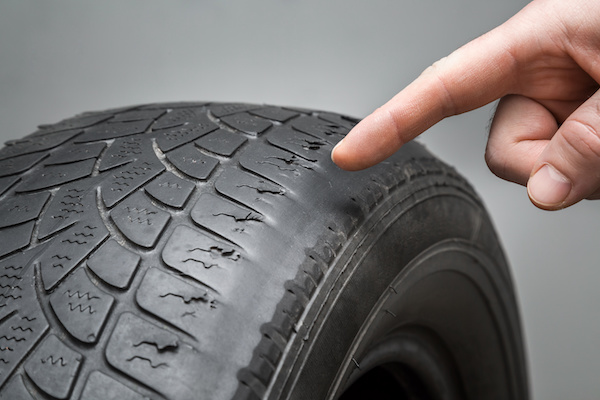Media
20 Apr 2023
Let's get to the bottom of the tire irregular wearing
Replacing your truck tires is one of the regular expenses to be expected for every Truck fleet. Every fleet manager has similar goals of maximizing tire removal mileage. The biggest issue is to reduce and minimize tire irregular wear. Tire tread irregular wear conditions will lead to premature tire removals and also reduced fuel economy.
1. Tire inflation pressure
Improper inflation is the biggest cause of irregular wear on TBR. An underinflated truck tire will wear quickly on the shoulders and, in extreme cases, weaken the tire sidewalls. Underinflated tires will also decrease your mileage, so it’s important to add air to get them up to the proper inflation quickly.
2. Tire Damage from Road Debris
You often can’t help it if a nail, piece of glass, gravel, or other objects from the road ends up embedded in your truck’s tires. However, dealing with these objects quickly can minimize damage. Make sure that you check your truck’s tires often, then remove any foreign objects before they have a chance to dig deeper into the tire.
3. Tire Alignment
Tire alignment refers to the adjustment of a vehicle's steering and suspension, also known as wheel alignment. When your suspension goes out of alignment, it causes irregular tire wear and steering inconsistencies. Adjusting the angles of the tires and their contact with the road following the vehicle manufacturer’s specifications for parameters such as camber, toe, and caster is the key to proper alignment.
Camber is the angle of the wheel relative to the vertical of the vehicle, and depending on the tilt, is either considered positive camber or negative camber. When the camber is at the correct angle, the tire and wheel will roll straight.
The toe is the most important angle for tire life, tire toe that is out of alignment means facing away from each other (toe-out) or toward each other (toe-in) can cause excessive tire wear, stress on other parts of your vehicle, and less fuel efficiency. It can also reduce your safety on the road.
A caster is an angle that identifies the forward or backward slope of a line that is drawn through the upper and lower steering pivot points. It affects the directional control of the steering.
4. Tire balance issues
When a manufacturer creates a tire or wheel, no two are ever exactly alike. That means they are different weights — even if it’s by a fraction of an ounce. The common symptoms of an out-of-balance wheel-tire assembly are uneven and faster tread wear and poor fuel economy. Tire balancing is a tune-up for each of your wheel-tire assemblies. When all areas of the wheel-tire assembly are as equal in weight as possible, the tire will roll smoothly. This helps improve tread wear.
Every piece of tire out from Paxxon has completed dynamic balance and also has been tested following the A TMC recommended practice (RP) which is a specification or practice that assists equipment users, vehicle/component manufacturers, and other industry suppliers in the purchase, design, maintenance, and performance of commercial vehicle equipment.
Choosing the right Tire will save costs for your fleet.

back

